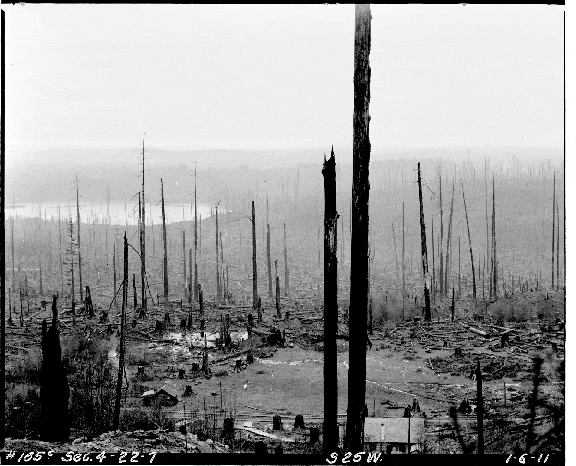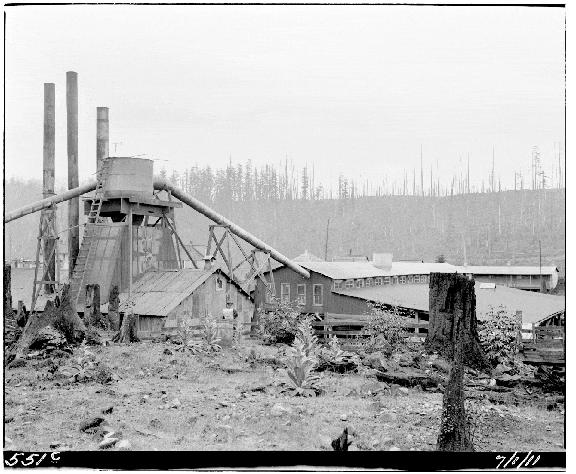This post is the first in a series of three concerning the specific history of Barneston, Washington. You can find the next two posts at these links: “The Nikkei Community” and “Issei Life and Work at Barneston“. This post draws upon material published in my 2017 article in Archaeology in Washington.
Barneston, Washington, was founded in 1898 by the Kent Logging Company to log the Cedar River Watershed. Located in King County and east of Seattle, the town was one of many that logged the forests there. Its presence coincided with a wider boom in the timber industry (Ficken 1987). After the Great Seattle Fire of 1889, the City of Seattle decided to seek out a fresh water source to help prevent future disasters and to ensure the continued growth of the city. The Cedar River Watershed was chosen as the primary source for water, and the City began buying up land throughout that area (Klingle 2007). After initially agreeing to sell in 1913, the Kent Logging Company managed to extend its mill’s operation until 1924, when the city finally acquired and razed the town (Gilbert and Woodman 1995).
Like most mill towns, Barneston cut and processed lumber gathered by loggers in camps (Figure 1). These could range as far as 5 miles away and up to elevations of 3,300 feet above sea level (Figure 2). While life in Barneston was more comfortable than in the distant camps, both situations were dangerous, and accidents, including deadly ones, were common. Large saws, wide fan belts and conveyors, deafening noise, and the movement of tons of lumber made working in the mill towns a hazardous activity. It also didn’t help that towns rarely had doctors in residence. Injured workers were usually kept comfortable until a doctor could arrive, or were themselves sent to Seattle for treatment.

Figure 2. Logged area near Barneston. Courtesy of Seattle Municipal Archives.
A 1911 survey map, made as part of a value assessment by the City of Seattle, provides additional details on the town. Much of the town was organized around the processing and production area, which included a planing mill, kiln, and sawmill, as well as the mill pond. The Euro-American single men’s barracks were also located in this area. To the north and the east were a series of family houses and a school. The Nikkei community was segregated off to the west. A variety of pig pens, gardens, and chicken coops dotted the landscape, particularly in the Nikkei community.

